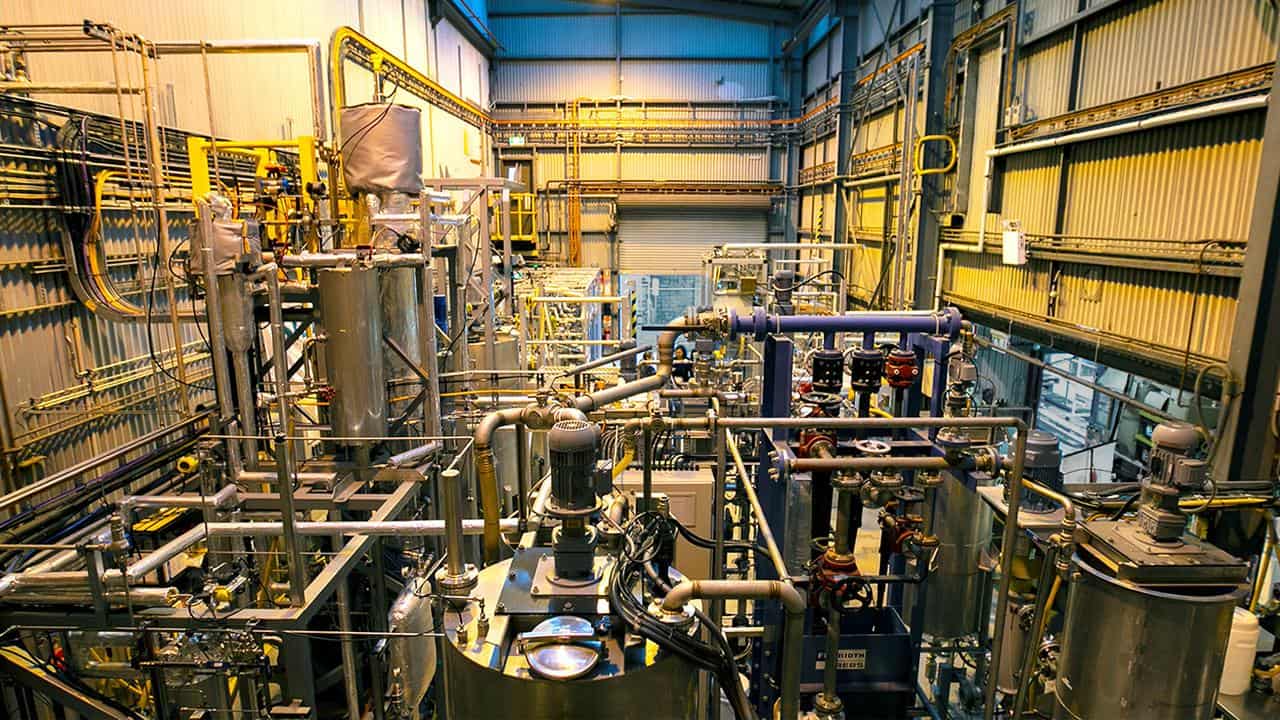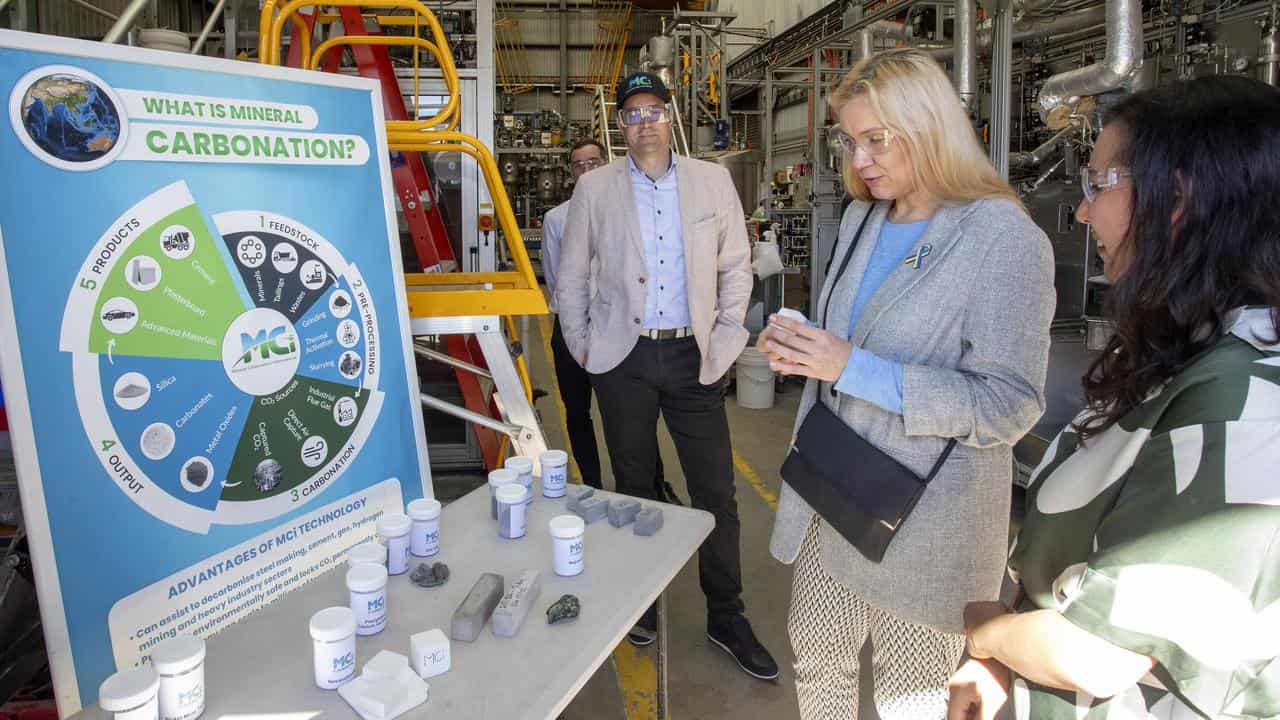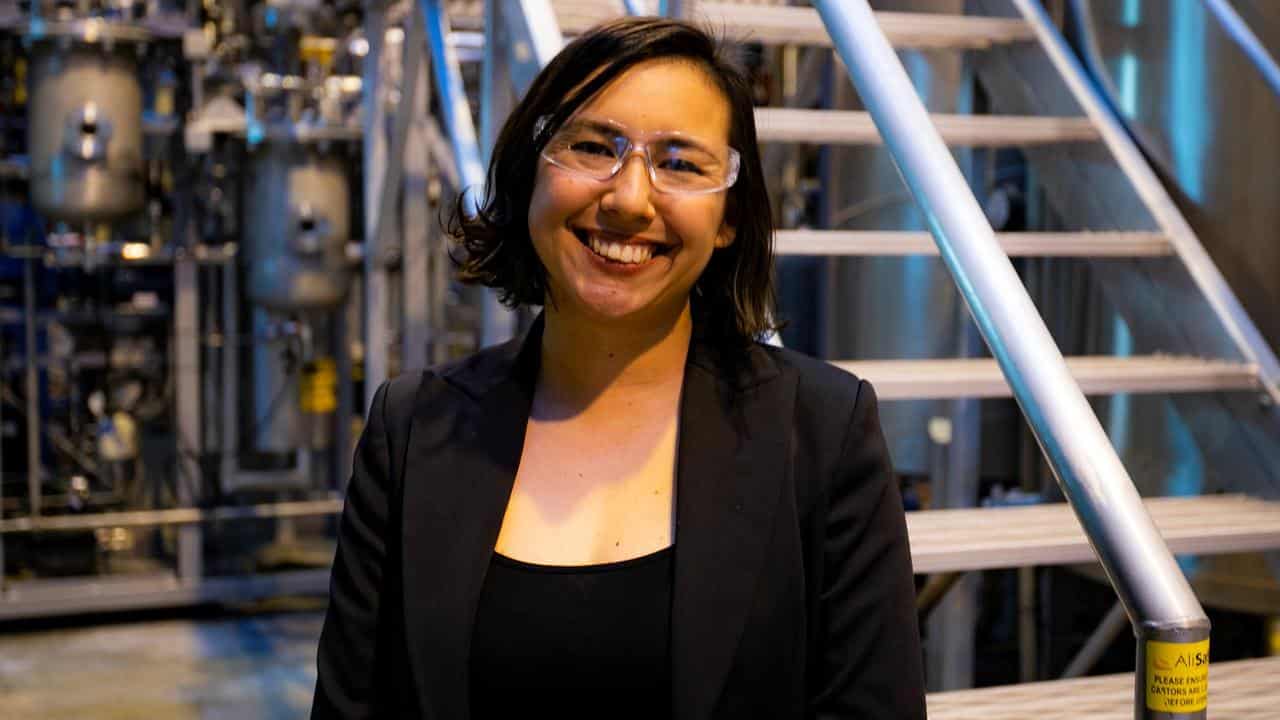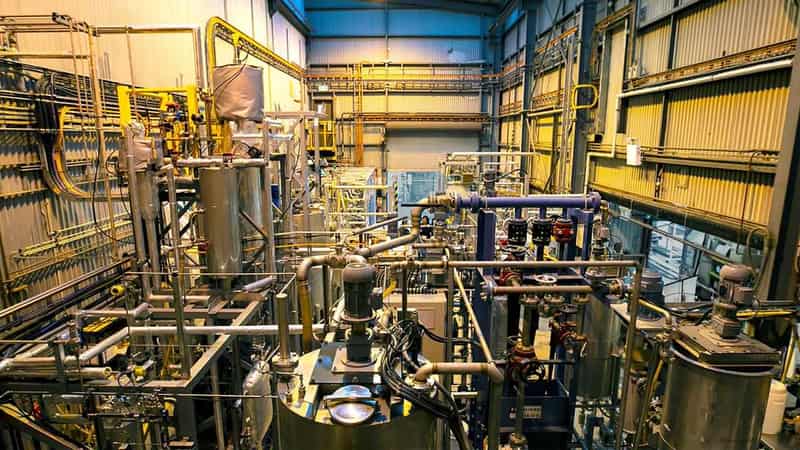
A symbolic low-carbon brick has been laid in the foundation of an industrial plant called Myrtle that is attracting global attention by turning emissions into solids.
With MCi Carbon headquartered in Canberra with a research and technical base in Newcastle, co-founder Marcus Dawe has been developing the chemical engineering process for 17 years.
As a technologist, he says he wanted to come up with a solution to the "carbon problem" that was starting to be understood by governments but was very visible to his peers.
"It wasn't an easy road ... it takes 20 years to develop a technology from lab-scale to industry," he told AAP.
Minister for Climate Change and Energy Chris Bowen laid the brick at a ceremony in Newcastle on Wednesday to mark the construction of Australia's flagship carbon capture utilisation (CCU) facility, which has been supported by both Labor and coalition governments.
Mr Dawe said a methodical approach in partnership with government, academic and industry, had led to the "major milestone".
"What we've realised is that there is so much demand for our carbon-embodied material, for the built environment but also for manufacturing, that we're racing to meet the demand," he said.
He said 10 per cent of some countries' emissions could be locked away with this technology and MCi Carbon had a long list of industrial companies that wanted to trial their materials.
The plant is under construction in partnership with major investor and industrial partner Orica, and with financial backing from Japan’s Itochu Corporation, Mizuho Bank and Sumitomo Mitsui Trust Bank.

Located at Kooragang Island alongside the Newcastle Port, MCi said Myrtle would turn more than 1000 tonnes of emissions captured each year from Orica’s ammonia plant to produce nearly 10,000 tonnes of materials.
European Union Commissioner for Energy Kadri Simson visited the plant last weekend to look at the technology's potential for being part of her region's decarbonisation.
Chief operating officer Sophie Hamblin-Wang said the "overnight success" of MCi Carbon had taken her the past 11 years, working with steel, cement, chemicals, refining and mining customers to explain the technology.
"Now, we can really feel the momentum of global capital and industry appetite ramping up," she told AAP.

The method is also under development for being brought under Australia's carbon credit regime.
"We haven't been focusing on the offset market in Australia because it's actually just the cherry on top of our business model," Ms Hamblin-Wang said.
Demand for new low-carbon materials has been estimated at more than $US6 trillion in the United States alone as the cement and construction materials industry tries to reduce its carbon footprint.
"If we were producing a million tonnes a year we're confident we would be able to sell it," she said.









